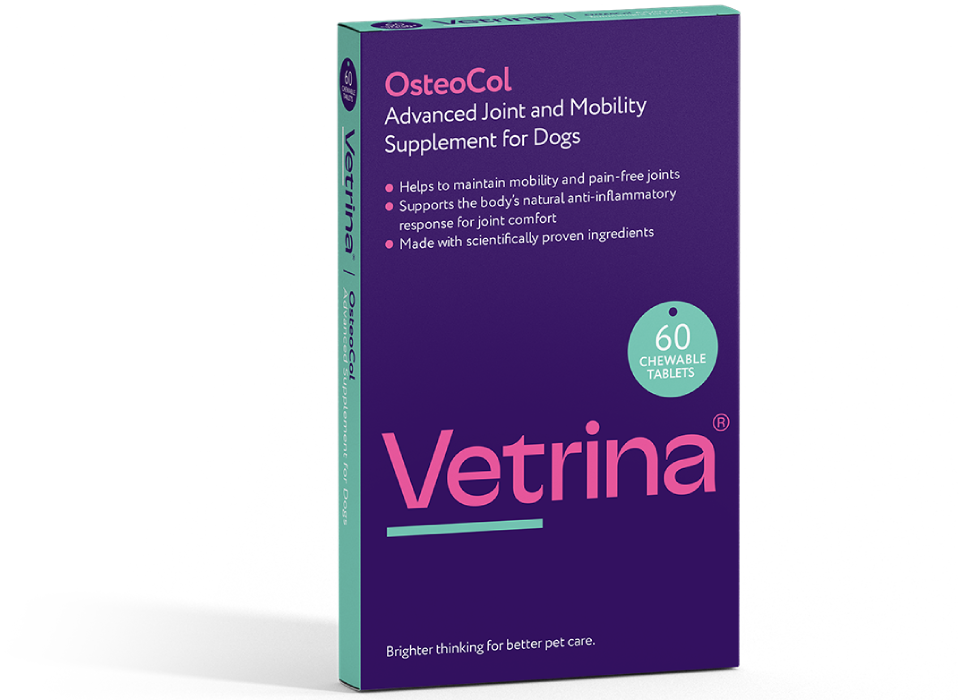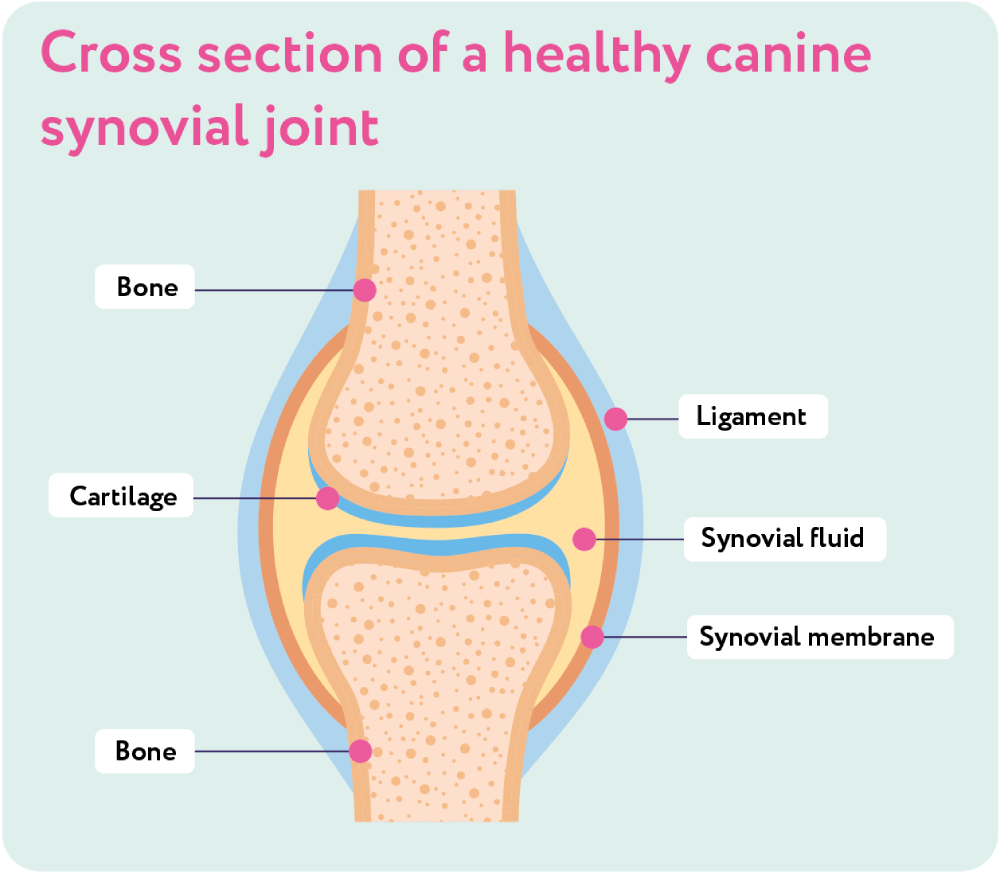
Advanced joint and mobility supplement for dogs
Joint pain affects at least 1 in 5 dogs, with that number tending to increase as dogs age.1 Vetrina Osteocol is an everyday joint support to help maintain mobility, flexibility and comfort. Vetrina Osteocol can be used in younger animals to help maintain joint health or to support older pets and those with reduced flexibility
Vetrina Osteocol has a unique formula, made with scientifically proven ingredients, to help support the body’s natural anti-inflammatory response, nerve function and healthy joint structures.
- Helps achieve and maintain optimum bodyweight
- Supports natural metabolic function and normal blood glucose levels
- Made with scientifically proven ingredients
Benefits
Soothes stiff joints, supports mobility and flexibility
- Supports synovial structures to preserve normal joint function and mobility. Enriched with palmitoylethanolamide (PEA) to help maintain nerve function and mobility in stiff joints.
- Hyaluronic acid is the main component of synovial fluid and the cartilage matrix. It helps maintain normal joint lubrication, function and mobility.
- Green lipped mussel is packed with omega-3 fatty acids, vitamins and minerals that support joint comfort and function
Helps maintain a healthy joint capsule
- Additional sources of glucosamine and chondroitin help support healthy joint structures. They make up a significant element of the cartilage matrix.
- Glucosamine and chondroitin are delivered with hyaluronic acid and omega-3 fatty acids to support joint health.
Supports body’s own anti-inflammatory response
- Undenatured type II collagen (UC type II) and curcumin help to maintain a balanced natural anti-inflammatory response in joint tissue.
- PEA preserves healthy nerve function.
| Bodyweight | Tablets per day |
| <5kg | 0.5 tablet |
| 6-10kg | 1 tablet |
| 11-20kg | 2 tablets |
| 21-30kg | 3 tablets |
| 31-40kg | 4 tablets |
| >40kg | 5 tablets |
Directions for use
To be given once a day, with or without food. Suitable for dogs of all breeds and sizes. Always make sure fresh drinking water is available



